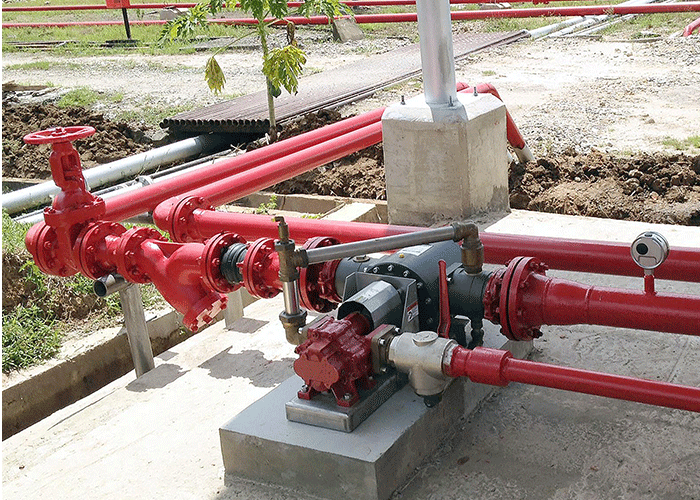Tyco Fire Protection Products showcased its expertise in water mist suppression solutions at the International Water Mist Association (IWMA) Conference in Istanbul. Dr Tim Nichols, Sales Director Water Mist EMEA, gave a presentation entitled ‘Fire Protection of Compact Archive Storage using Water Mist’, where he discussed how the extinguishant is well suited to the protection of irreplaceable works and artefacts in highly valuable buildings.
Tim’s lecture focused on a fire test protocol that was formulated to verify the performance and use of Tyco’s own water mist solution, AquaMist, in an historical building, home to precious archive storage. The National Fire Protection Association (NFPA) 750 standard requires that, when employing a water mist suppression system, fire testing is undertaken pertinent to the risk. However, of the published fire test protocols listed in NFPA 750, none details the requirements for archives that contain roller (compact) racking. Many of the racks in the targeted building are of the ‘roller’ type, which limit the amount of space for building services, including those for extinguishing system pipework.
Together with the project stakeholders, Tyco devised the protocol to include test rig and layout, test type, fire load, data acquisition (for example, sensors and imaging), hardware required (such as pumps, nozzles, pipe, tank, generator), and health and safety procedures (for instance, the fire brigade). The associated performance based fire tests were then designed to replicate the range of application parameters associated with archive storage.
While ignition sources at the original site were identified to be minimal, and the main fire source confirmed as arson, the multi-level building poses numerous challenges that had to be considered when formulating the fire test protocol to guarantee effective protection. Low ceilings and numerous obstructions, such as lighting, ducts and pillars, contribute towards the confined environment of the archive storage basement level. Items are stored in a mixture of open racks and compact racks, which offer less than a 150mm gap between themselves and the ceiling, and there is limited on-site water storage. Pre-test risk analysis also highlighted restricted access and exits below and above ground, so it is essential for storage space to be maximised and safe egress provided in case of the event of a fire. In addition, the highly valuable nature of the storage contents meant that the selected fire suppression solution had to ensure minimal damage to these historical items.
To achieve validation, the tests had to meet various objectives. These comprised rapid control of the fire within a prescribed area (in this case, defined as within a block of racks); control of temperature; attenuation of radiation; and minimisation of collateral damage through water clean-up. They also had to take into account various parameters, including the specified high pressure mist system; a 30 minute run time; and an annual measurable achievement objective (AMAO) defined according to a formula based on the quantity of nozzles activating during testing.
The fire tests, carried out for both open and roller racks with minimum storage gaps, were undertaken in a customised test rig, designed, built and fitted to replicate the exact specification, racking arrangements and storage materials of the site. Considered a high load, the fuel materials were identical to that found in archive storage, including paper, books, micro-film and CD cases.
Success was defined by pass or fail criteria and determined by detailed quantitative measurements on system configuration, hydraulic analysis, discharge pressure, discharge sequence, fire spread, temperature, fire damage and water consumption. In both tests, Tyco’s AquaMist system operated effectively and was observed to suppress and control the fire efficiently. The project team was impressed by the lack of fire and smoke damage to the materials and structure and the product has since been installed in the building in question.
“The IWMA conference is a fantastic opportunity to highlight the benefits of water mist as a fire suppression solution, as well as demonstrate its versatility in a wide range of applications,” comments Dr Tim Nichols. “Identifying a gap in the market and taking the opportunity to formulate a fire test protocol for archive storage enabled us to validate the expert capabilities of our AquaMist system and facilitate protection of a customer’s highly valuable assets.”
For more information, go to www.tfppemea.com




